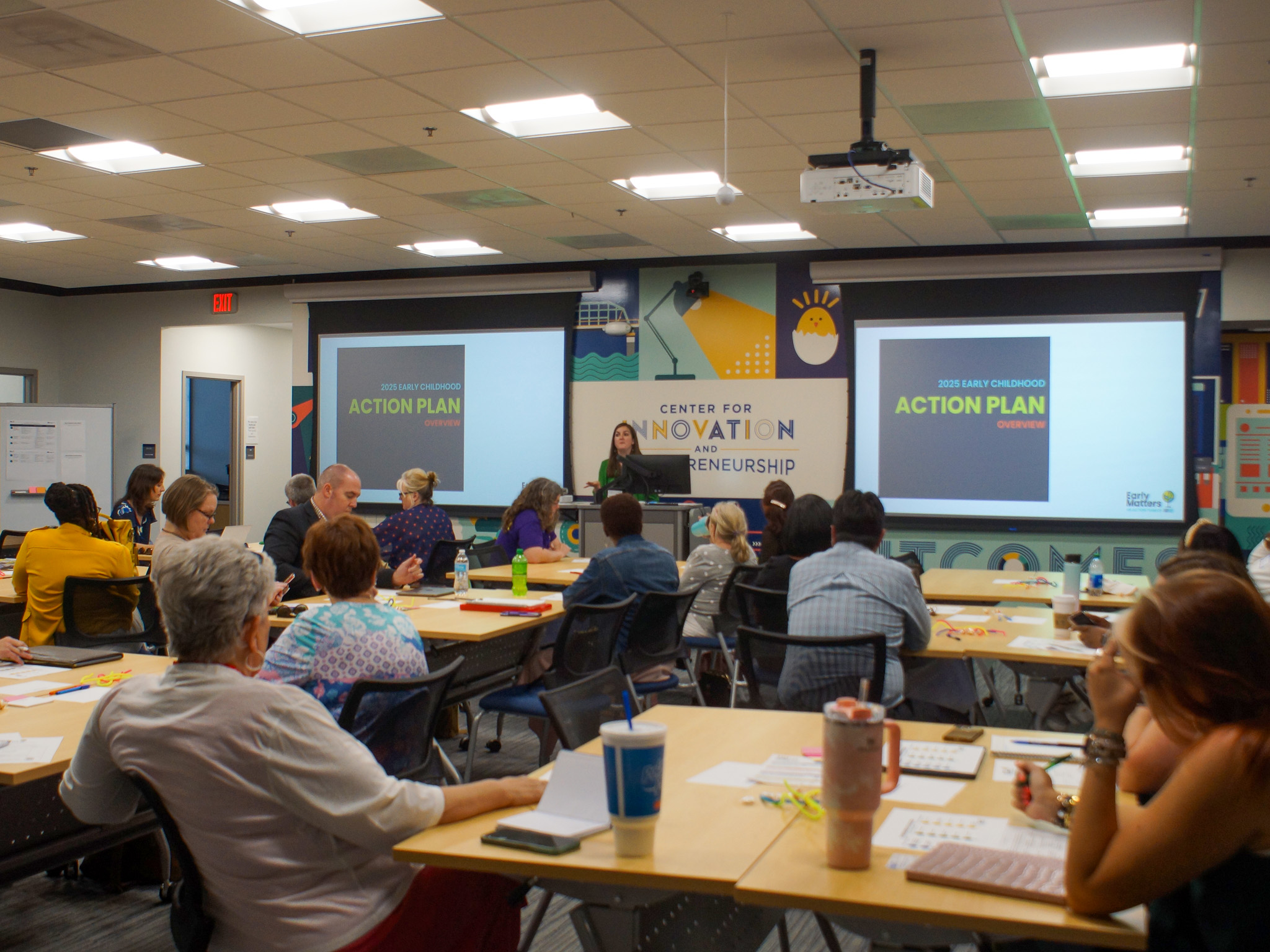Chattanooga is making significant strides in developing its future workforce through an ambitious initiative called the 2025 Early Childhood Action Plan.
Launched last October after extensive planning and research, this initiative focuses on enhancing early childhood care and education across the domains of learning, health and development, as well as family and community support – all of which are crucial indicators of third grade language and math proficiency.
Employing a data-driven approach, assessments and community feedback are being used to drive actionable strategies, leading to positive outcomes for children.
Chattanooga and Hamilton County are proud participants in the Tennesseans for Quality Early Education (TQEE) program created by Bright Start TN, a statewide network of communities dedicated to improving early childhood outcomes.
Recently, community organizations invested in early childhood met at the University of Tennessee at Chattanooga’s Innovation and Entrepreneurship Lab for the Bright Start TN mid-year update meeting. At the meeting, Jonathan Scoonover from TQEE introduced a new statewide data dashboard designed to track outcomes for Tennessee children up until the third grade.
The concerted efforts in Chattanooga and Hamilton County are coordinated by Jennifer Andrews of Chattanooga 2.0, an organization housed under the Chattanooga Chamber Foundation which supports our thriving economy through early childhood efforts and cradle-to-career resources for the region.
While it may take up to five years to witness the full impact of this comprehensive plan, the meeting for Chattanooga 2.0’s Early Matters action team demonstrated that new, evidence-based strategies are underway and partners continue to align towards common goals in early childhood.
Within the larger action plan, a total of 18 strategies have received funding, while 10 are still in search of funding or capacity. The mid-year meeting allowed Early Matters team members to share progress and updates on 15 strategies currently in motion.
Members also received the chance to hear an update on legislation passed this year that will impact early childhood systems.
The meeting revealed several key takeaways that indicate progress and promise for the future.
Top takeaways are:
- For the first time, partners within Hamilton County Schools and those serving children up to 5-year-olds are aligned around a common definition of “Kindergarten Readiness” and resources are being developed for parents and caregivers to equip children with foundational language and math skills from birth. One such program is Chattanooga Basics, housed in the City of Chattanooga.
- A research pilot conducted by the University of Tennessee at Chattanooga and funded by the Maclellan Foundation demonstrated a notable increase in exchanges between teachers and students within early education classrooms, after receiving tailored professional development. Building upon this success, the intervention will expand to 10 additional classrooms commencing this fall.
- Evidence-based home visitation programs are showing a positive impact on supporting first-time moms to deliver babies at a healthy birth weight and create secure mother-baby attachment. The Nurse Family Partnership is one such free program for WIC-eligible mothers that has slots still available and funding secured through 2024.
These upcoming developments highlight the positive trajectory and significant progress being made in Chattanooga. By leveraging existing expertise, resources, and collaborative efforts with Chattanooga 2.0, local organizations are working together to create coordinated and aligned early childhood systems.
Recognizing that genuine change cannot be achieved in isolation, the overarching vision driving these endeavors is to transform Chattanooga and Hamilton County into the nation’s premier environment for child development. The primary target of the strategies in the 2025 Early Childhood Action Plan is economically disadvantaged children from birth through the third grade.
This update marked a significant milestone as participants gained a broader understanding of how their individual contributions fit into the larger puzzle.
By sharing strategies and progress reports, participants had the opportunity to observe progress in areas beyond their immediate involvement. This collaborative environment helps eliminate communication barriers, fosters cooperation and support, minimizes blind spots and helps ensure a comprehensive approach to early childhood development.
Learn more about the 2025 Early Action Plan, here.
Learn more about Chattanooga 2.0, here.
